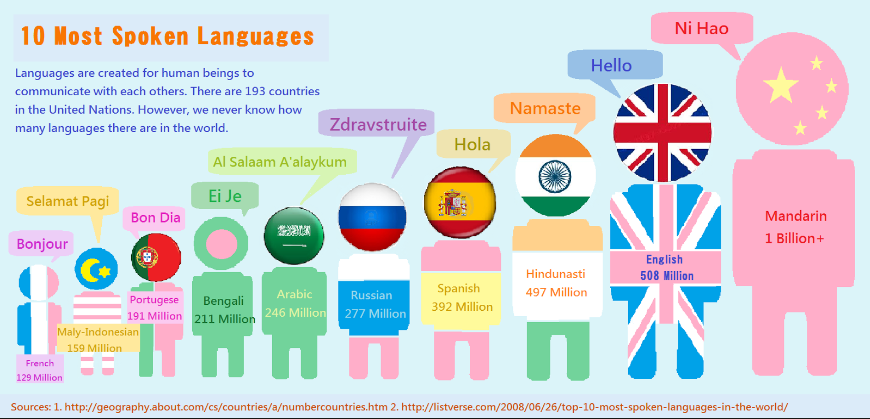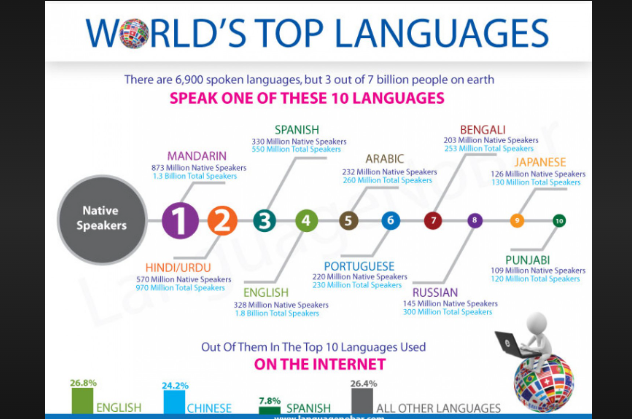Exploring Languages Written from Right to Left: An Insightful Journey
Languages serve as the backbone of communication, bridging cultures and societies worldwide. While most languages are written from left to right, there exists a unique subset of languages that follow the opposite pattern – written from right to left. In this article, we'll delve into this intriguing linguistic phenomenon, exploring the languages that embrace the right-to-left writing system.

10 most spoken languages
1. Understanding Right-to-Left Writing:
The concept of writing from right to left might seem unusual to those accustomed to left-to-right languages.
In this system, words are constructed from right to left, with characters progressing in the opposite direction.
This writing direction has historical and cultural significance in various regions around the globe.
2. Languages Written from Right to Left:
Arabic: One of the most well-known right-to-left languages is Arabic. Spoken by millions across the Middle East and North Africa, Arabic is renowned for its distinctive script and rich literary tradition. The right-to-left writing style of Arabic reflects the profound cultural and historical impact of the language.
Hebrew: Hebrew, the language of the Jewish people, is another prominent example. With deep roots in religious texts and cultural heritage, Hebrew is written from right to left. It is used in religious scriptures, literature, and everyday communication in Israel and among Jewish communities worldwide.
Persian (Farsi): Persian, also known as Farsi, is the official language of Iran and several neighboring countries. It employs a right-to-left writing system, with beautiful calligraphy often seen in poetry and literature. Persian has a rich literary tradition that has greatly influenced the region's cultural landscape.
Urdu: Urdu, spoken primarily in Pakistan and India, is another language that utilizes a right-to-left writing style. It shares its script with Arabic, adding its unique characters to accommodate its phonetic requirements. Urdu is an official language in Pakistan and is widely used in literature and media.
Yiddish: Yiddish, a language historically spoken by Ashkenazi Jews, is also written from right to left. Although it has experienced a decline in usage, Yiddish still holds cultural significance among Jewish communities and is a reminder of their history.
3. Cultural and Historical Significance:
The prevalence of right-to-left writing systems in languages like Arabic, Hebrew, Persian, Urdu, and Yiddish reflects the deep cultural and historical roots of these languages.
These scripts are not only tools of communication but also vessels of cultural identity, preserving traditions, literature, and religious texts.
4. Modern Usage and Challenges:
In an increasingly globalized world, the challenges of adapting right-to-left scripts to digital media and cross-cultural communication have emerged.
However, advancements in technology have facilitated the digital representation of these languages, allowing them to thrive in the modern era.

World's top language
Languages written from right to left are a testament to the diversity of human expression and the unique ways cultures have evolved over time. Arabic, Hebrew, Persian, Urdu, and Yiddish, among others, offer a glimpse into the richness of linguistic traditions that continue to shape societies and contribute to global understanding. As we celebrate linguistic diversity, it's important to recognize the beauty and complexity of both left-to-right and right-to-left writing systems.